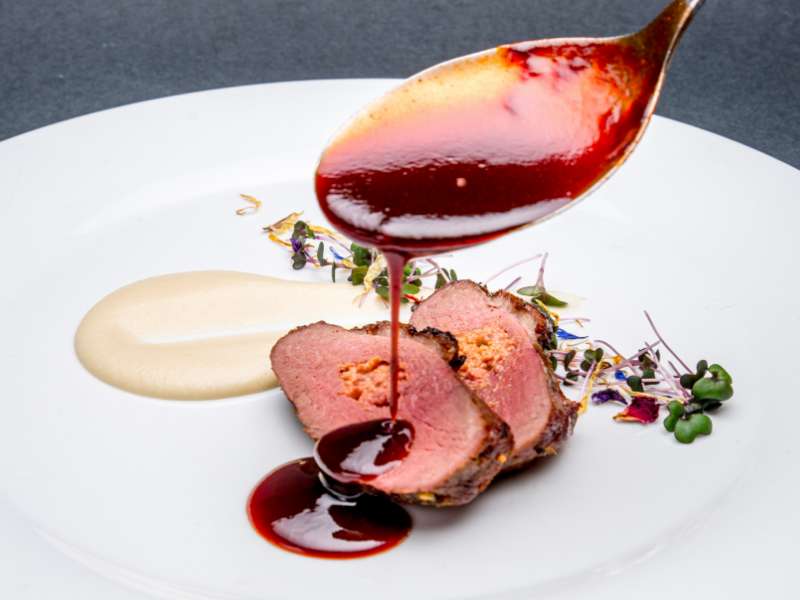Ahh, wine — the classy beverage choice for any occasion. This fermented delight has many partners but is usually stereotyped alongside a thick-cut steak or as the companion to a girls’ night. Even though it holds a reputation for elegance, the chemistry that defines it is the true backstory for its sophistication.
Wine is more than just juice in a bottle. Its ability to trigger and transform one’s palate is remarkable in the science that determines its essence. Wine can bring out new and exciting flavors to a dish just by capitalizing on its makeup. Science is cool! Now, pour a glass and read on for best pairing practices.
In Vino Veritas
Wine has been paired with food for centuries (6th and 5th millennium B.C.), back when it was safer to drink wine than drinking from the local water supply. With it once being the only way to quench your thirst during a meal, this led to the discovery of a new objective behind the bottle, enhancing the dining experience.
Wine contains both volatile and non-volatile compounds. Volatile compounds contribute to a wine’s aroma, but it is the non-volatile that are responsible for taste and mouthfeel. These compounds may be affected by components such as alcohol, sugar, acid, polysaccharides, nucleic acids, and phenolic compounds.
Tannins, the big hitter for phenolic compounds, are commonly associated with bitterness and astringency, and define the complexity of a red wine. This is why you generally see a steak paired with a bold red instead of a white wine. Can white wines be paired with red meat? Yes, yes, they can — it’s all in the sauce! Grill up a delicate, tender Braveheart® steak, and top it with a creamy dry, white wine-spiked mushroom sauce. Add Chardonnay or Pinot Gris to your roux for the perfect suggested pairing partner. Pro tip: Sip on what you cook with.
Your Nose Knows
Your palate is a fickle thing. Not a single person offers the same smell and taste capabilities. Your tongue is made up of tiny bumps called papillae, responsible for sensing taste and translating flavors to your brain. Scientists describe five basic tastes that our tongue is sensitive to as sweet, salty, sour, bitter, and umami.
While your taste buds provide a satisfying experience, it’s through the aromas of wine that we actually taste the wine. As wine ages, it undergoes chemical reactions among acids, sugars, alcohols, and phenolic compounds that create new smells, adding to the unique bouquet of the pour.
The aroma is essential for developing the perfect pairing. Always smell all the players — stick your nose deep in the wine glass and get a big whiff — smell first, sip the wine, taste the food you are looking to pair, then sip again. Balance the taste with the smell to pass the pairing test.
Makeup Test
Acidity is what gives a wine its tart and sour taste. White wines tend to present more acidity than red wines. However, lighter red wines, such as Pinot Noir, tend to have a higher acidity than heavier-bodied reds. The most prevalent acids are tartaric, malic, citric, and lactic. Lactic, deemed the “milky” acid, helps contribute to a creamier mouthfeel — think of an oaked Chardonnay and how your palate emulates a fuller weight with a creamy, buttery, or coconutty profile. Pair this with a creamier dish that mirrors the flavor profile.
When sipping, acidity is what plays a role in the puckering sensation we anticipate when sensing a tart profile. While trialing pairs for high-acidity wines, you’ll notice that sweetness, saltiness, and fatty foods balance the sour taste from the acid. This is why pairings like Champagne and french fries, Sauvignon Blanc and mozzarella sticks, and Riesling and potato chips work so well together.
Sugar balances the acidity, almost eliminating the puckering effect. A wine’s sweetness is determined by the amount of residual sugar left in the wine after fermentation. In wine tasting, our palates are least sensitive to the taste of sweetness. Sweet wines pair with rich foods, sour or spicy foods, as well as desserts. You can also pair sweet with sweeter to tone down the sugar, leveling out the pairing.
Alcohol is what determines a wine’s weight and body. Typically, the higher the alcohol level, the more viscous the wine. When paired, salt and spicy foods will amplify the alcohol and give off a perception of heat.
Tipsy Tasting Techniques
When crafting the perfect pairing, consider the flavor intensity. Does the pairing make the wine better, the food better, did it mute one of the players, or did it match perfectly, providing a sense of blissful euphoria for your taste buds?
Match the weight and texture of the food to the weight of the wine, as in a red wine with a red sauce pasta. Match fatty foods with higher tannic wines — if using dips and sauces, pair the wine with the dip or sauce; if no sauce, pair it with the protein.
Remember, there are no specific rules when it comes to pairing wine and food. The most important thing is to have fun with it. Play around with flavor combinations that appeal to your palate and create pairings that dazzle!



